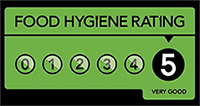The Honey Bee Dispensary Active Honey
The Honey Bee Dispensary offers unprocessed English honey with high level antimicrobial, antibacterial and antiviral properties (known as Active Honey). The honey has an officially rated Total Activity level of 20+, similar to the Unique Manuka Factor rating of 20+ and comparable to an 830 MGO (Methylglyoxal) rating, as used by the New Zealand Manuka industry.
Active honey is widely believed to help support a healthy immune system and fend off colds and flus – drinking a hot toddy with a spoon full of ‘proper’ honey is a much used preventative measure against an impending cold, as well as being totally delicious.
Due to excellent marketing by the New Zealand Manuka industry, the use of active honey is already well established in the UK. However, some English honeys can also boast very similar attributes, without the downside of shipping the honey half way around the world in plastic containers. Manuka does have one advantage; unlike English honey it is particularly relevant when used in sterile wound dressings where its unique active properties survive sterilisation. Fortunately sterility isn’t a pre-requisite for ingestion.
The testing methods of Manuka vs English honeys are different, but the levels of activity, and therefore benefits, are similar.
Our active honeys are best stored below 15 degrees Celsius, away from temperature fluctuations and out of direct sunlight. Whilst we give a Best Before date (a legal requirement), honey has an impressive shelf life – astonishingly it has been found, still edible, in Egyptian tombs.
Since high quality, healing honey is a natural product, the levels of moisture, fructose, glucose and other nectar derived natural sugars will vary from batch to batch. Crystallisation is normal, and part of the natural process. It does not affect the quality or beneficial properties of the honey.
The speed with which crystallisation takes place will vary according to the plants foraged by the bees. With some honeys the natural separation of the moisture from the glucose molecules can increase the likelihood of fermentation, and refrigeration helps guard against this.
What is Total Activity?
The Honey Bee Dispensary’s honey is made by bees foraging nectars known to produce particularly ‘active’ honey, derived largely via natural enzymes in the pollen and nectar. The honey is independently laboratory tested* to establish its ‘Total Activity’ rating – in this case 20+.
Basically, the higher the TA number, the greater the antimicrobial strength. Our honey is labelled by virtue of this antimicrobial strength, rather than taste, texture or nectar origin. All honeys with a TA in excess of 10 may have beneficial antimicrobial properties – the higher the rating, the more effective the honey.
It is a combination of the Peroxide Activity (PA) and Non-Peroxide Activity (NPA) which determines the TA. PA results from the reaction between Glucose Oxidase (an enzyme produced by bees), moisture and glucose (found in the nectar). The result of this reaction is the steady production of a low concentration of hydrogen peroxide, a powerful antibacterial and antifungal agent which whilst effective, is gentle on the human body.
NPA refers to any other antibacterial activity which naturally appears in the honey.
* If you would like to see our certification document, please email us.

